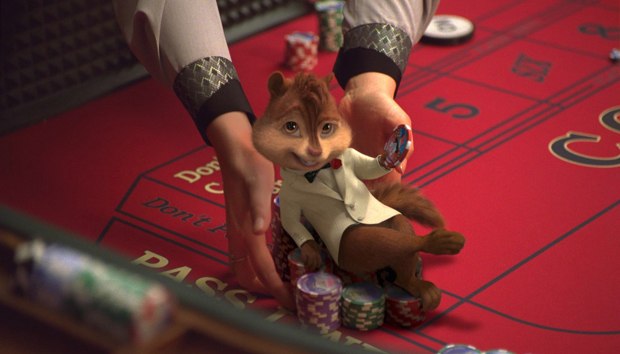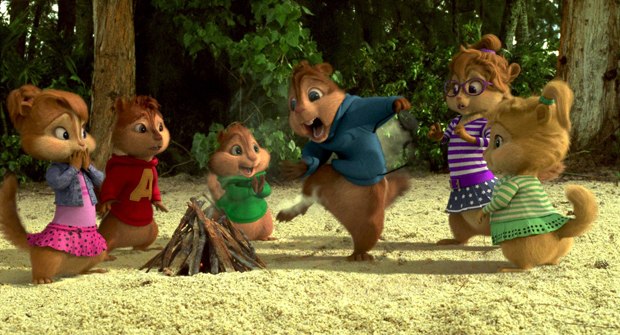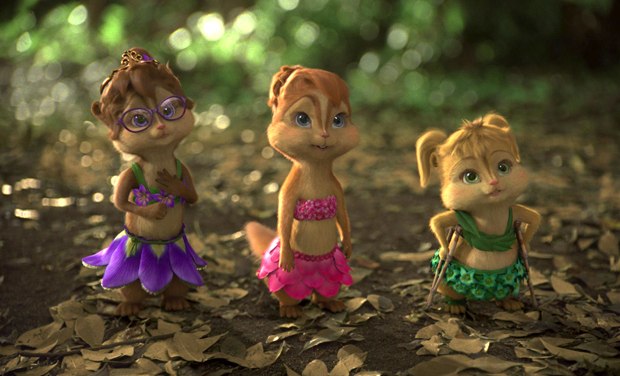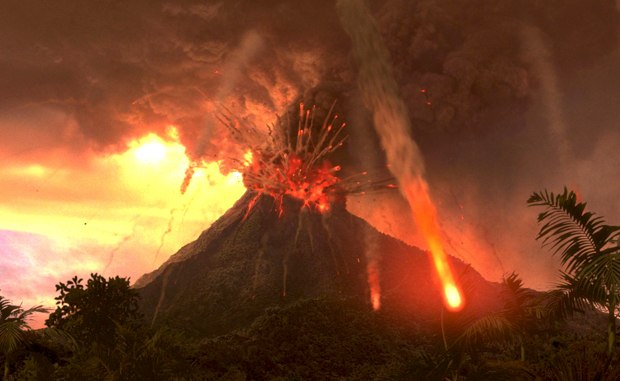Doug Smith of Rhythm & Hues explains how there's more to the latest Alvin and the Chipmunks sequel than the usual furry antics.
Of course, you would expect some animated tweaking for Alvin and the Chipmunks: Chipwrecked. That goes without saying for the third film in the popular franchise. The six chipmunks were in fact completely re-rigged by Rhythm & Hues for faster and better performances. And the lighting was refreshed as well, which was important for major sequences involving a volcano that required its own series of lighting looks.
Likewise, the new director, Mike Mitchell (Shrek Forever After), brought a new sensibility along with the new animation director on the production side, Kevin Johnson (Iron Giant). They wanted to push the mood swings of the characters given the jeopardy of the story, in which they're stranded on an island with a loony treasure seeker and an erupting volcano. They wanted the chipmunks to get angrier, crazier, a bit more depressed and happier when called for.
So there are a lot more environments on this one, ranging from the cruise ship to the ocean to the island's sandy beach and jungle and volcano. And it was pretty active for the VFX and tech crews at Rhythm & Hues. They shot in Hawaii, aboard the Carnival ship and on a Vancouver stage for the jungle scenes (while it was the middle of winter outside).
And because of the location work, there was also a lot more use of 3D matte painting (whose process is called Rampage at Rhythm & Hues).
"This was more of a ray-traced lighting render [project]," suggests Doug Smith, vfx supervisor at R&H. "It's not 100% ray traced, but there is that quality to it. And so it's a huge step undertaken to improve the look of it. And sequence by sequence, quality wise, we were pretty careful to adjust the emotional context that was involved."
Meanwhile, all the animation was done, as usual, with the studio's proprietary Voodoo software with the modeling done in Maya. All the effects work was done in Houdini.
With fur creatures, of course, ray tracing is used sparingly because of its computational expense. However, it's new for the chipmunks because of the naturalistic environments. Rhythm & Hues found that the efficiency was worth the effort and Smith acknowledges that everything is headed in that direction anyway.
"The way it has worked in the past is to have a key animator or group of animators on blend shapes that the rigging can accomplish," Smith adds. "And all these key expressions are set up but the rigging allows it to be hit more rapidly."
Alvin and his friend get particularly unruly aboard the cruise ship where they're skating on suntan lotion on the deck and Alvin slides down a string of lights like a zip line. There's even a section where he rides a water slide with some nice water work in Houdini. They sent a cameraman down a waterslide multiple times shooting in both directions. The stateroom was done on stages in Vancouver, but the movie version looks like a penthouse. One of the best animated scenes occurs when Simon offers Dave some advice about handling Alvin more diplomatically while tying his bowtie. They put a CG bowtie on actor Jason Lee and used multiple mirrors at the same time.
As water goes, the ocean was pretty demanding, according to Smith. "There's dynamics between a floating object and the kite and a string and the weight of the characters on the string that is pretty complex from building the type of water you want to the behavior of the donut and how fast they're going across it," he explains. "And then the amount of pull that the kite is going to have vs. the amount of movement and sag the characters are going to have took a lot of back and forth between the effects people and Mike Mitchell, the director, and the animators to work this out. It's getting to the point where people ignore CG water, but it doesn't make it any easier. It's still a complex process to make it look realistic and intensive as far as the amount of iterations that you have to do."
The beach sequences necessitated different fur combs for the chipmunks. So, all six characters had to have different rates of wet fur. And there's sand that clings to their fur, requiring different types of sand interaction, all done with effects and look dev. And also their clothes start aging at a certain point. Plus you had to keep track of where they walked throughout the sequence their footprints have continuity. The sand consisted mostly of effects particles, but sometimes it needed to be modeled. And then patches would be made where they step. Some of it is in the form of 2.5D meshes that get deformed by the characters walking.
They also walk in a lot of jungle environments with leaves and debris on the ground. The leaves were sometimes effects-moved objects that were projected textures on card-like surfaces or actual models of leaves in some cases, depending on what was more economical or believable.
"The trickiest stuff for this project was definitely the volcano erupting and the interaction with the characters," Smith conveys. "We had to reconstruct backgrounds pretty heavily because of lack of wind movement or lens flares and changing weather conditions. There's very little of the live-action plate left, with the exception of the live characters and the ocean, and most of it had to be replaced."
As for the volcano, the lava, which was done in Houdini, wasn't as much of a major component as the pyro plastic cloud and the lava bombs themselves," Smith continues. "So it was a pretty heavy series of simulations to achieve it."
The volcano was a Maya model based on an actual mountain in Hawaii that was reshaped. And then matte paintings were used to shape it and it's a series of 3D matte paintings. This way the shape of the volcano could interact with the effect elements, the falling lava bombs or the running lava.
"They also have to cross over a deep gorge, which also involves heavy 3D matte paintings with a river down at the bottom," Smith says. "The river was achieved with element photography of a rushing river and we also photographed a lot of plants against bluescreen at Rhythm & Hues. And we populated the 3D matte paintings as much as we could with live footage. The same goes for the volcano and the coast line. As this thing's erupting, we have a lot of violent wind moving the plants around."
Bill Desowitz is former senior editor of AWN and editor of VFXWorld. He has a new blog, Immersed in Movies (www.billdesowitz.com), and is currently writing a book about the evolution of James Bond from Connery to Craig, scheduled for publication next year, which is the 50th anniversary of the franchise.












